Enjoy this detailed Summer garden tour of my Pinky Winky Hydrangea Garden. In addition to the Pinky Winky Hydrangeas, this garden features a Muskogee Crepe Myrtle, Fothergilla, evergreens and flowering perennials like Geranium Rozanne, Geum and Roses. Includes video!
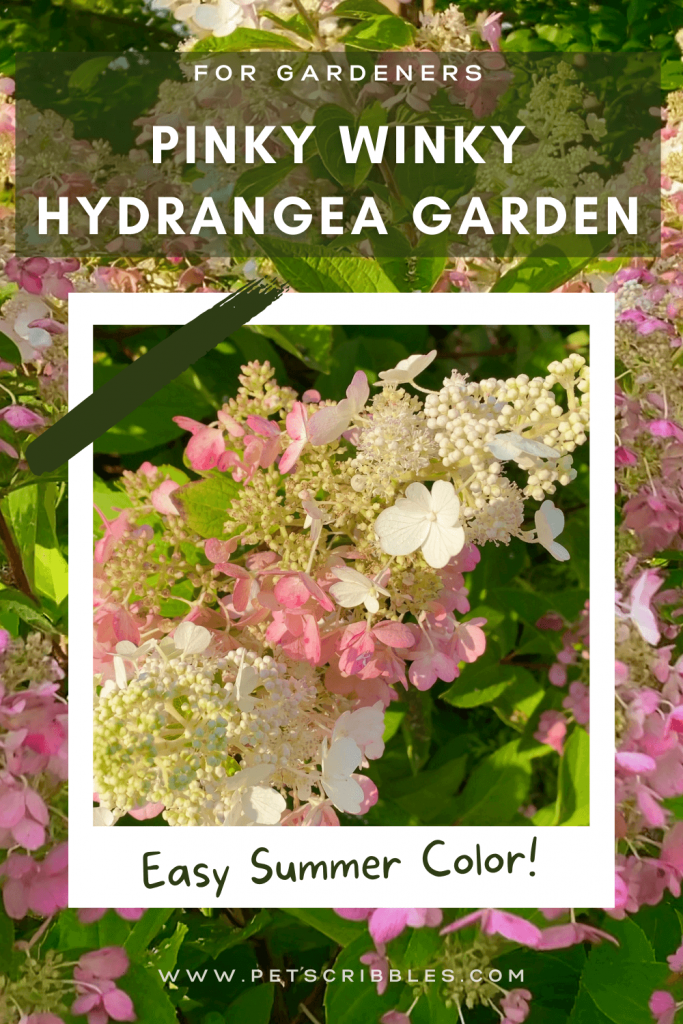
Pinky Winky Hydrangeas are probably one of my favorite flowering shrubs, and right now they are in their prime blooming period in my garden, here in southern New Jersey, zone 7. I put together this photo and video tour of my Pinky Winky Hydrangea Garden because it isn’t always easy to see a garden’s details.

For example, here is what the front center bed — which I affectionately call my Pinky Winky Hydrangea Garden in the Summer — looks like from the street:
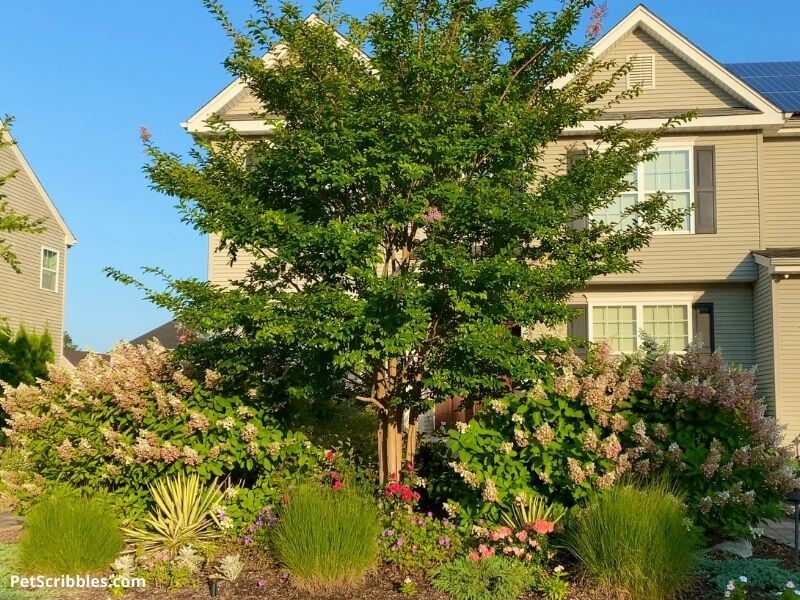
It isn’t easy to see all of the plants growing in this garden bed. Nor can you see what is growing on the “other” side of the bed — the side that faces our home. We get to enjoy some pretty fun plants and shrubs that aren’t seen from the street during the Summer months.
One detail you can’t see is the gorgeous peeling bark on our Muskogee Crepe Myrtle tree:

Isn’t that cool to see? The bark peels during August every year. What’s underneath is gorgeous salmon-colored bark that looks so pretty, especially during the Winter season.
Pinky Winky Hydrangeas
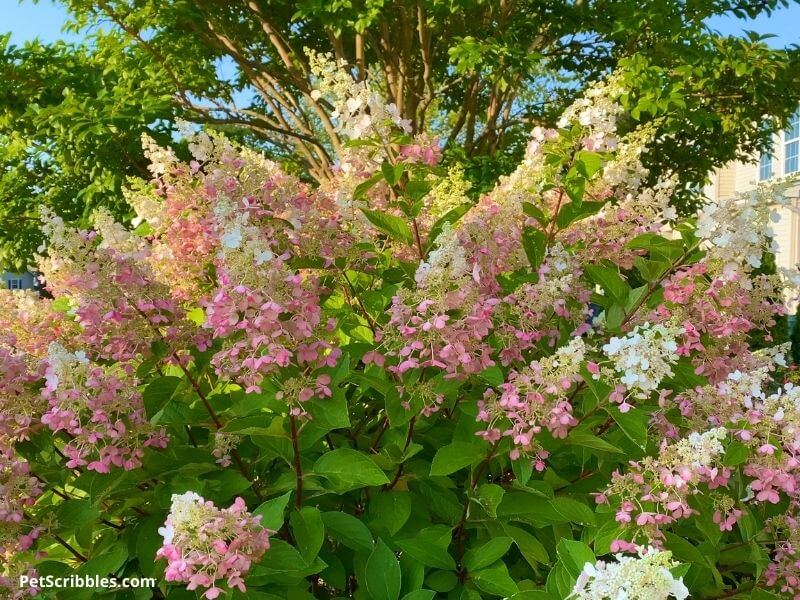
I have a four Pinky Winkies in this center garden bed: two on each side of the crepe myrtle tree. They are pretty tall right now, probably the tallest stems/flowers are 6 feet high!
In the video — the video link is at the bottom of this article — I show you how the flowers continue to grow in length even after they begin blooming. Here is a newer flower on the shrub:
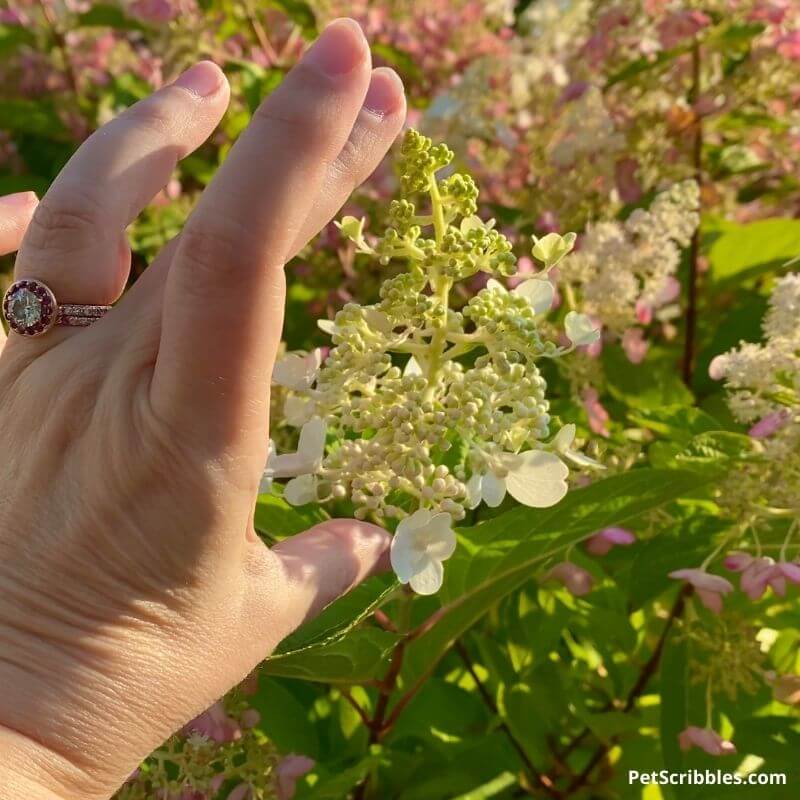
This new flower is only about four inches in length. However, this flower will continue to grow and reach a length of 14 to 16 inches!
And below is a flower much further along in growing. You’ll notice both pink and white larger flowers. Those flowers are sterile, but they draw the pollinators in. It’s the much smaller flowers that almost look like fuzz in this photo that are actually fertile. (Another fun fact!)
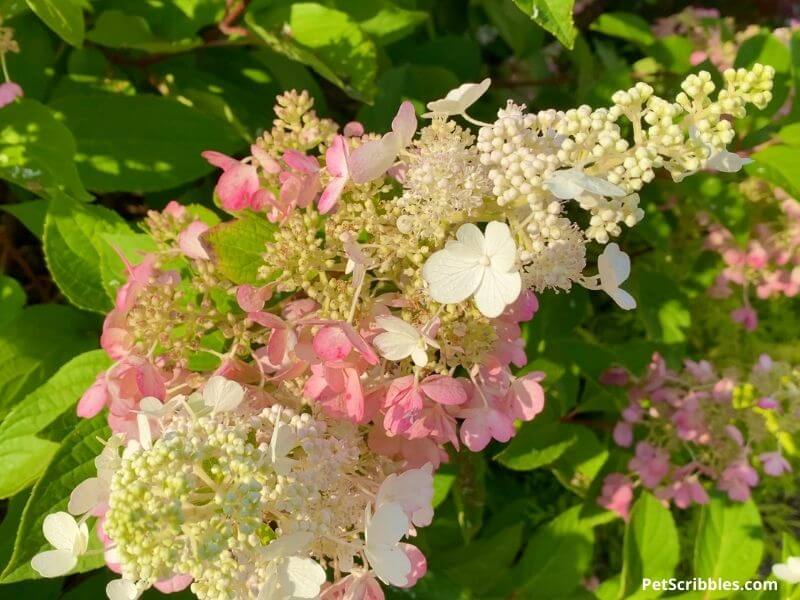
You also can see several flower buds on this flowerhead that have yet to open. Pinky Winkies continue to produce new flowers all season long and into the Fall where the season stays mild.
I’ve written a free guide to Pinky Winky Hydrangeas, which covers everything you need to successfully grow these shrubs. Click here to read it: Pinky Winky Hydrangea Care — Your Ultimate Guide.
Pinky Winky Hydrangea Garden Bed
Here are some photos of what else is growing in this garden bed.
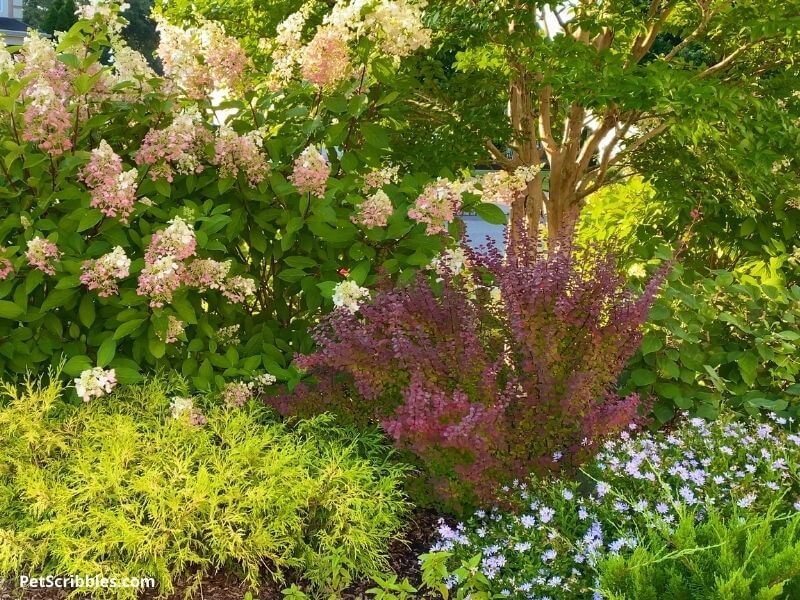
The above photo shows hydrangeas and the crepe myrtle tree, plus a King’s Gold Mop Cypress, an Orange Rocket Barberry shrub, a Fothergilla shrub, Blue Star Kalimeris (False Asters), and a bit of a Sea Green Juniper. It’s a nice mix of evergreens and perennials. There’s always something interesting to look at.
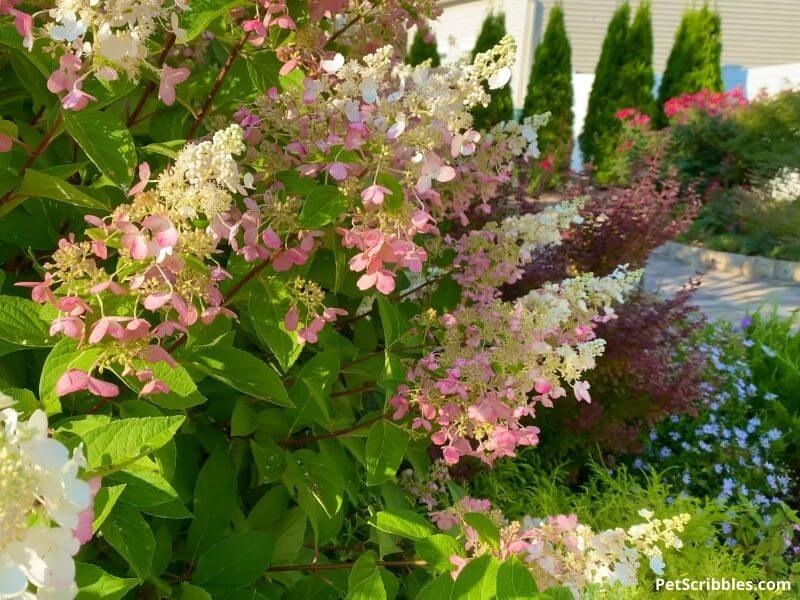
The pink and white colors of the hydrangeas stand out, along with our Knockout Roses you can see in the distance above.
Here are the Blue Star Kalimeris flowers. These bloom all season long and love heat and humidity. You can learn more about them in my Blue Star Kalimeris article.
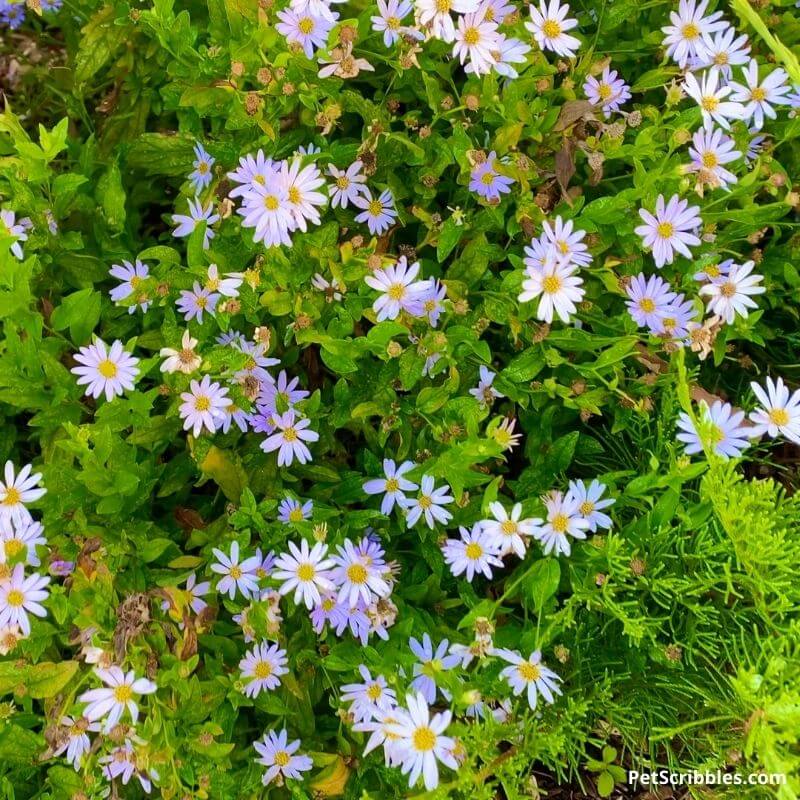
I love the way the Orange Rocket Barberry and the Kalimeris both glow when the sun hits them just right!
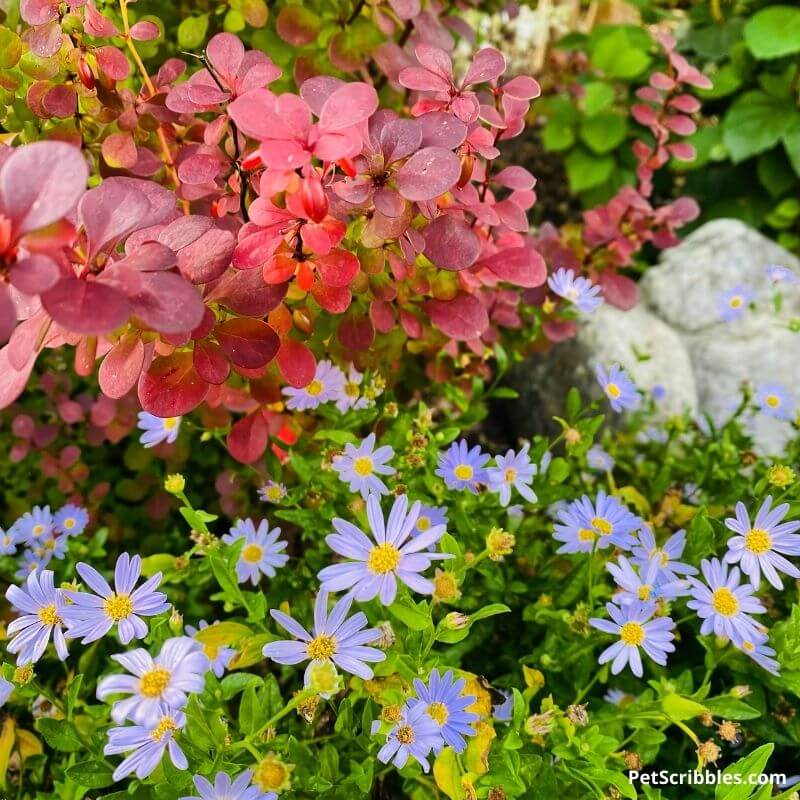
I have two low-growing and spreading Blue Rug Junipers on each side of this garden bed. Now that they are several years old, they produce stunning pale blue berries which are so pretty. But you have to look down to see them!
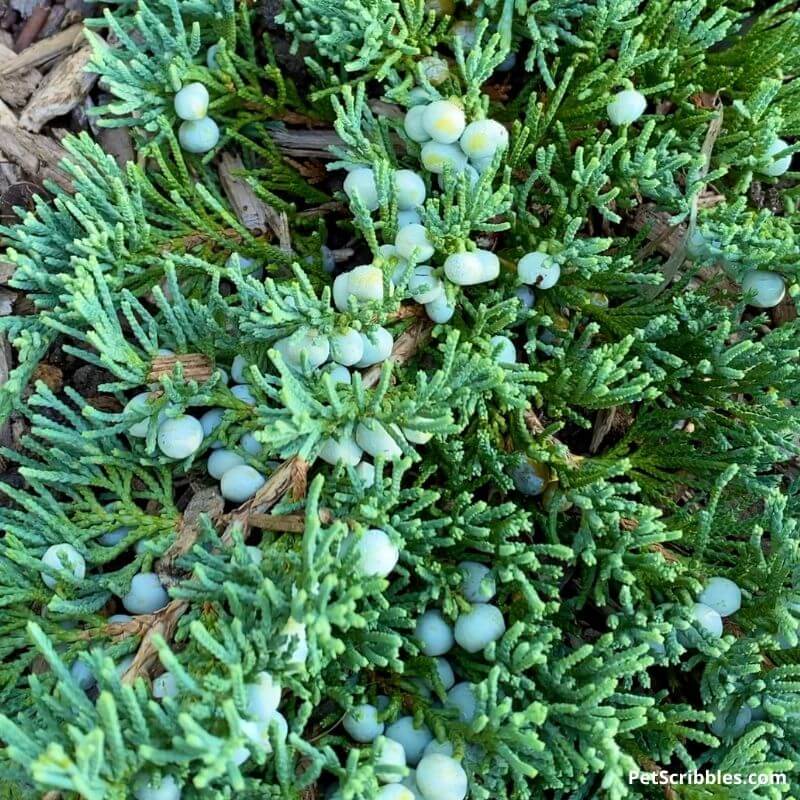
How are the rabbits, you ask?
Ok, maybe you didn’t ask, but I’ll share a few stories. I’ve written before about my frustration with the rabbit population around here. And I’m trying to learn to live with them — even while I do my best to regularly use my favorite Repels-All granules and plant more rabbit-resistant plants.
My three Fothergilla shrubs are not rabbit-resistant, and during the Winter one of them was chewed down quite a bit. I’m relieved to report, however, that these shrubs have regrown nicely and started several new shoots next to the original shrubs.
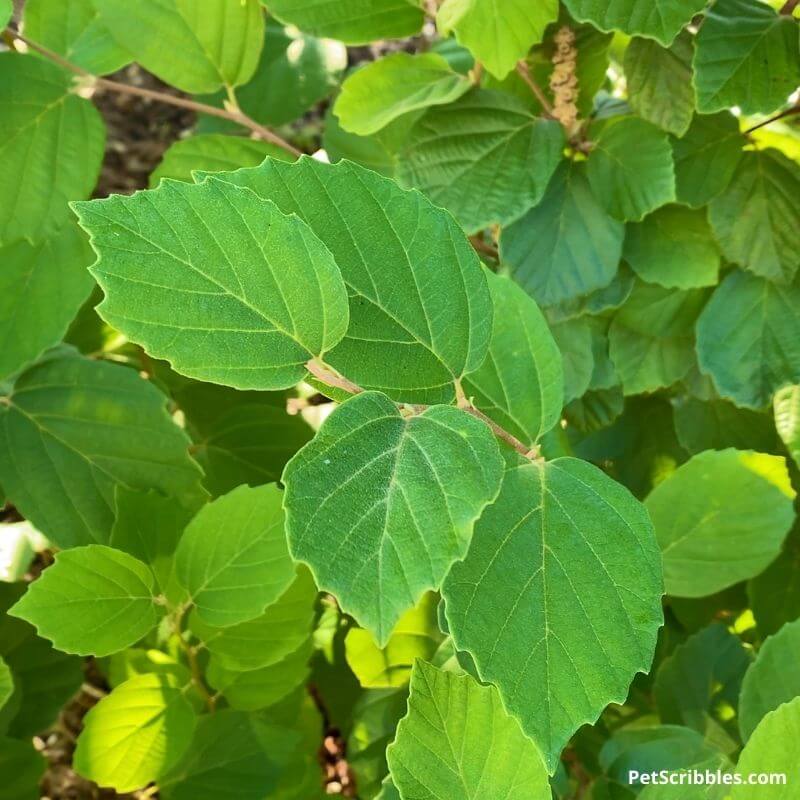
Another frustration was the unexpected damage the rabbits did to our Yucca plants. (You can see me lament what happened in this video on my Garden Sanity YouTube Channel.) Yuccas are supposed to be toxic to rabbits, but they obviously don’t know that. After many years of never touching our Yuccas, they demolished two of them down to the stumps. One began to grow back in the Spring:
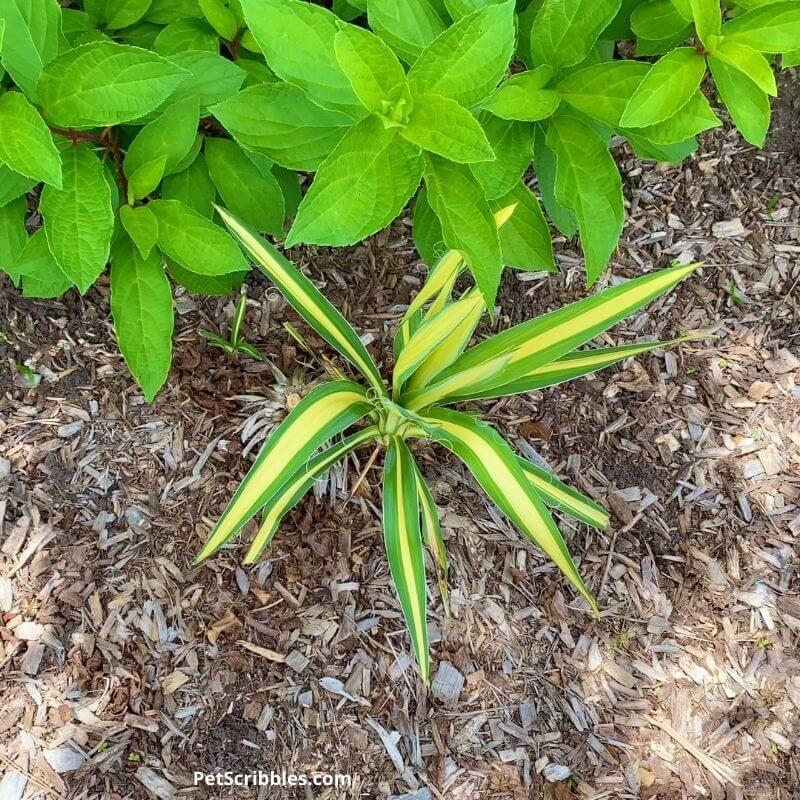
Although I wanted to rip it out, thinking the rabbits would just eat it again, I left it in at my husband’s request. (It’s one of his favorite plants.) The rabbits haven’t touched it since — most likely because they have way more to munch on during the Summer months in everyone’s yards. Today, the Yucca looks good and continues to grow:
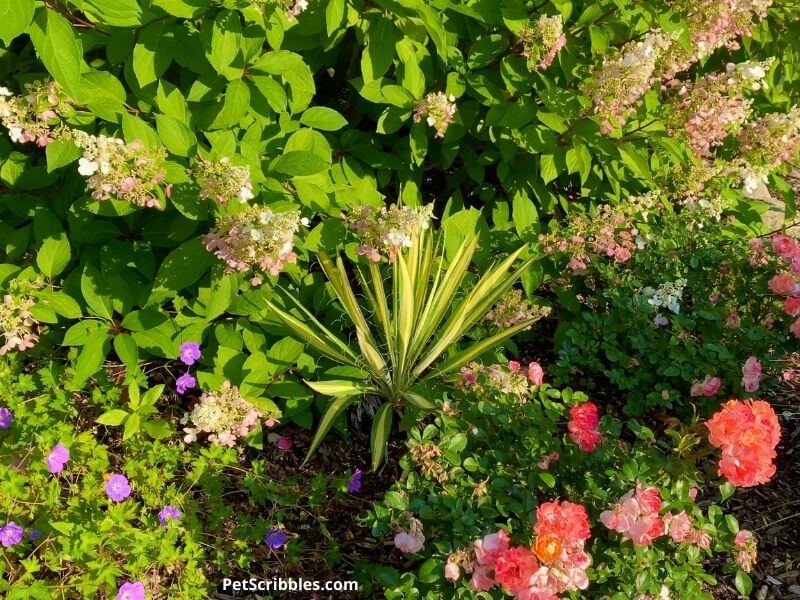
In the photo above, there are Pinky Winky Hydrangeas, Geranium Rozanne (purple-blue flowers), and peach-colored Drift Roses all surrounding the young Yucca plant. This coming Winter I will try my best to better protect the Yuccas.
One last adorable shrub to show you is this Thuja Pancake Arborvitae. Isn’t it cute?
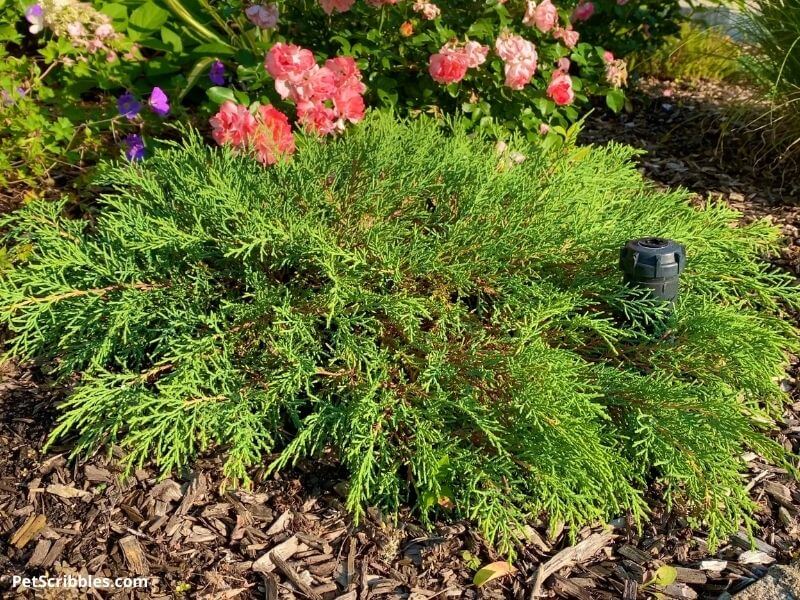
I think of this Pancake Arborvitae as a cross between a groundcover and a low shrub. It won’t really grow much more but has spread just a bit. It’s a nice plant for the front of gardens as it provides easy evergreen color.
Pinky Winky Hydrangea Garden Video
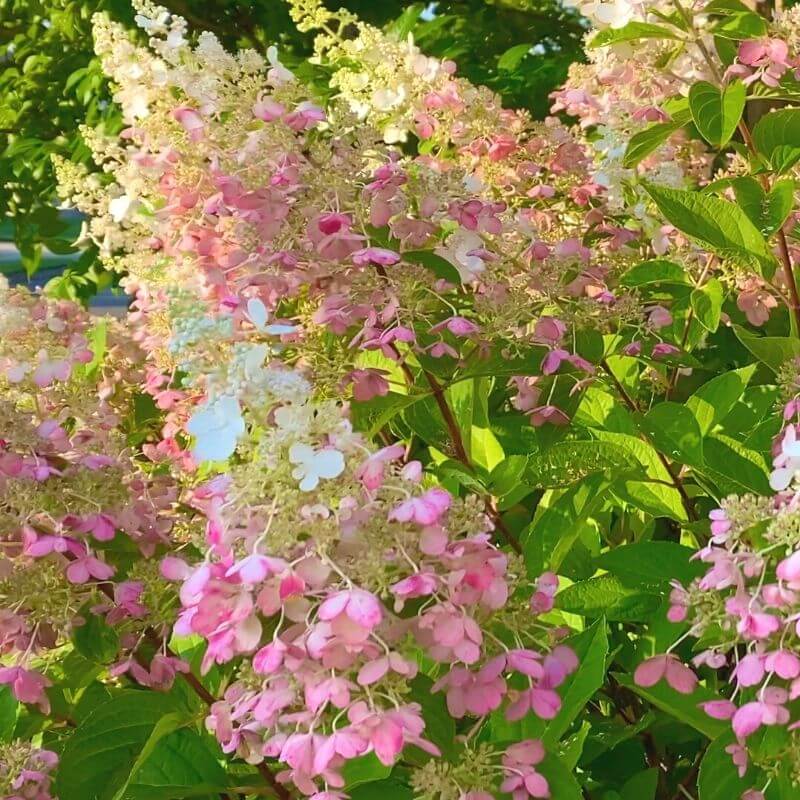
Even with photos, it’s still hard to share everything in this pretty garden bed. So I hope you will watch my video below, where I take you “up close and personal” with all the plants in this garden!
Grab a cup of coffee or tea — or a glass of wine — and come along with me on this colorful garden tour!
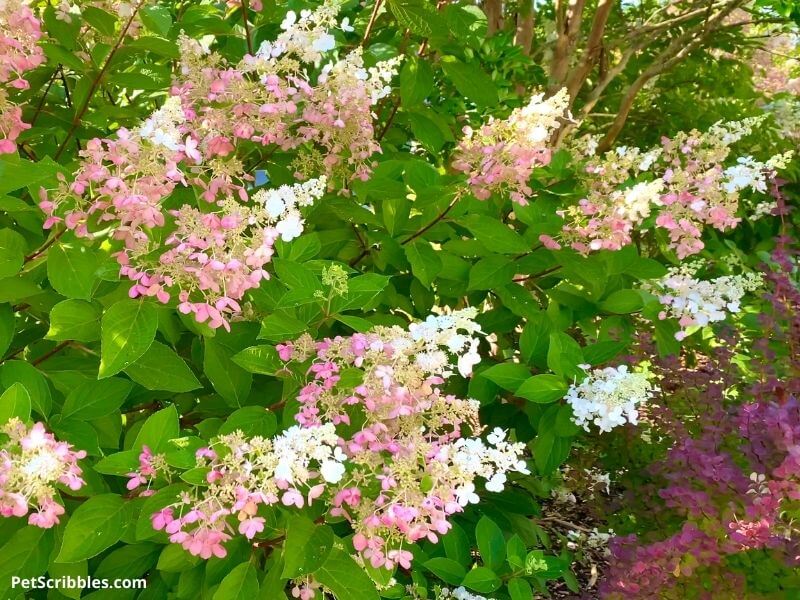
Happy gardening!

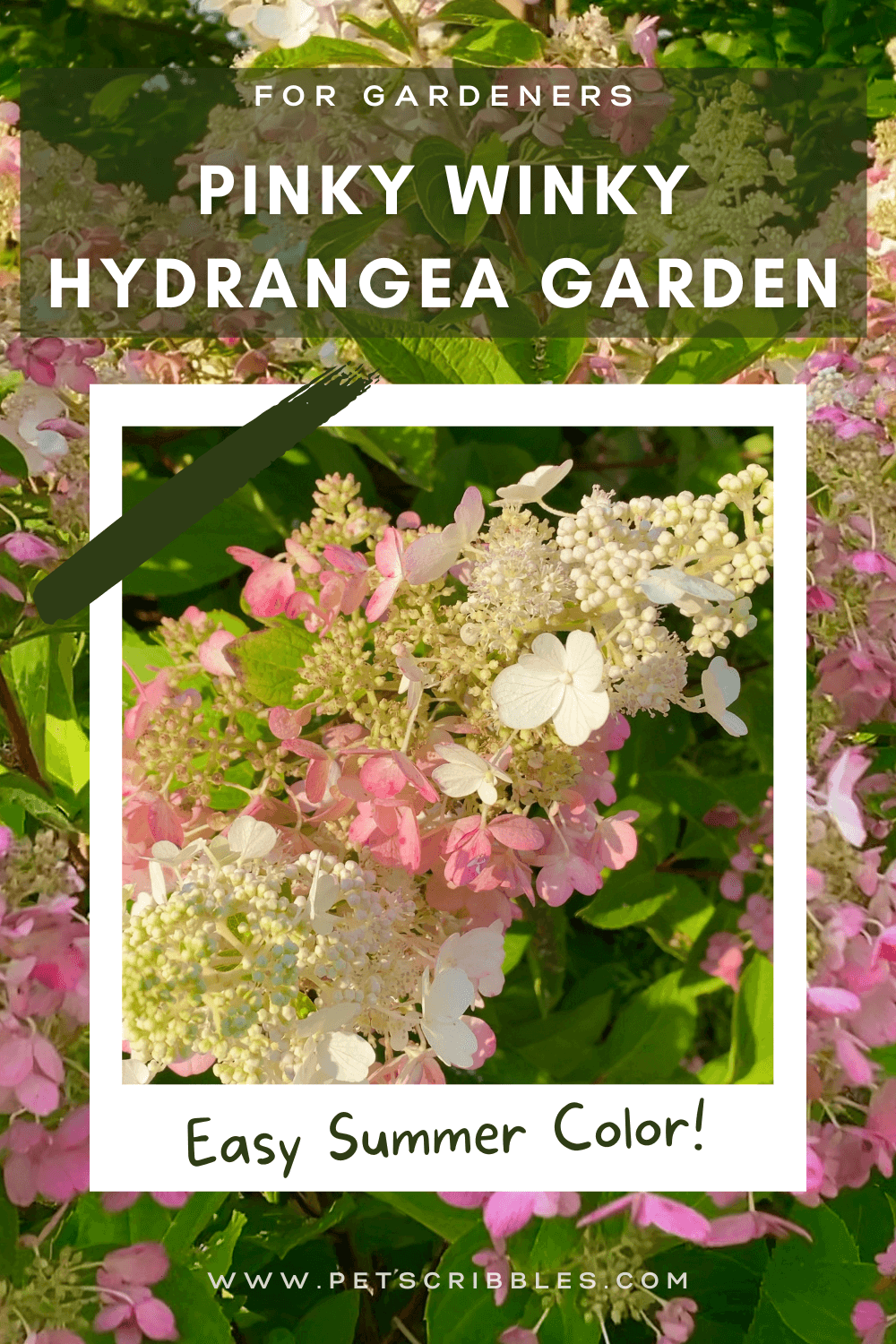
Thinking of getting the Pinky winky for the front of my house in front of winter Gem boxwoods. Can this variety maintain a height of about 3 ft? We were thinking bobo’s but I like the color of the Pinky winky
Hi Gary, Thanks for your questions. I have a complete guide to Pinky Winky Hydrangeas here on this website that may be helpful to you. The mature size of a fully grown Pinky Winky hydrangea is approximately 6 to 8 feet tall and wide, however, these hydrangeas grow as large as 8 to 10 feet tall and sometimes even taller when they are super happy! And yes, that’s even if you prune them down each Spring like I do! These aren’t the ones you want to put in front of shorter evergreen shrubs. The Winter Gem Boxwoods will only grow at the most 4 to 6 feet tall and wide and they are slow-growing over time with no pruning. These boxwoods also need full to partial sun, and the Pinky Winky Hydrangeas will shade them too much over time. There are a few newer dwarf varieties of panicle hydrangeas, like the Bobo’s. Fire Light Tidbit is a new offering from Proven Winners that has the same beautiful color as it’s full-size relative Fire Light Hydrangea plus has wonderful Autumn foliage color too. I have two Fire Lights that I planted last year, so they aren’t full size yet, but I just did a video on Fall garden color where I show the beginnings of the Fall color so you could get an idea of the flowers and leaves. Tidbit is (so far) the smallest panicle hydrangea on the market. I know more are being researched and developed because many home owners want smaller hydrangeas. (Tidbit can be ordered directly from Proven Winners’ website too, in various container sizes and prices.) I hope this helps you!